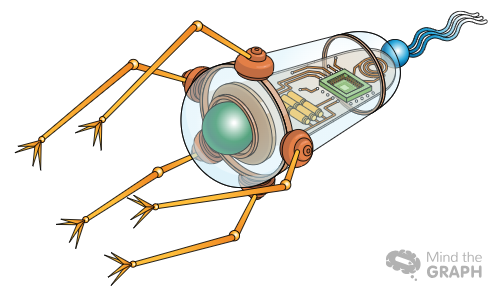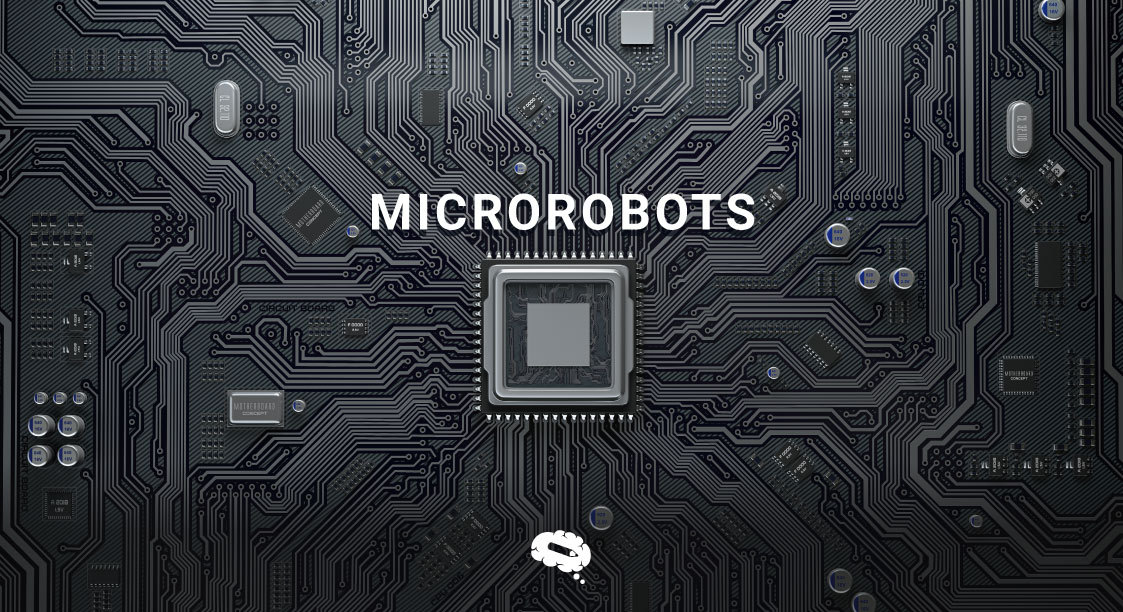Robotics has always been at the forefront of technology innovation, from the microscopic world to the largest of machines. Robots have progressed from clunky and stiff devices to increasingly complex and versatile inventions throughout the years.
The rise of microrobots is one of the most recent and interesting advances in robotics. These tiny robots, some as small as a few microns, have the potential to transform many aspects of our life, from health to manufacturing to environmental monitoring.
This article will delve into the interesting world of microrobots, including the difference between microbots to nanobots.
What are microrobots and how do they work?

Microrobots are miniature robots with dimensions estimated in micrometers. They are built to do a specific job, such as delivering medications to specific cells in the body or cleaning up environmental toxins. Microrobots are often driven by electric fields, magnetic fields, chemical processes, or even biological methods such as muscle tissue.
One of the most important characteristics of microrobots is their tiny size, which allows them to function in limited places and access difficult-to-reach locations. They can be built of a range of materials, including as metals, polymers, and even biological molecules like DNA. Some microrobots move in reaction to external stimuli like light, heat, or magnetic fields, while others are pushed by small motors.
Microrobots can also be controlled in a number of ways. Certain microrobots, for example, may be programmed to follow a specific course, while others can be controlled remotely using magnetism. Microrobots can even be outfitted with sensors that allow them to sense and respond to changes in their surroundings in some circumstances.
Overall, microrobots use a combination of mechanical and sensory systems to accomplish a wide variety of activities on a microscopic scale. The potential uses for microrobots are fast rising as researchers continue to explore new materials and technologies, and may encompass everything from medical diagnostics and medicine delivery to environmental monitoring and micro-assembly.
What are the applications of microrobots?
Microrobots have several potential uses in a broad range of industries. Among the most promising microrobot uses are:
Medicine
Microrobots have a wide range of medical uses, including medicine administration and targeted treatment, they may be programmed to deliver medications or other therapies directly to specific cells or tissues, reducing adverse effects and improving treatment success. Microrobots can also be utilized for microsurgery, enabling more precise and less invasive operations.
Manufacturing
Microrobots can be employed to perform micro-assembly, allowing complex structures to be created on a microscopic scale. They may also be used in manufacturing processes for quality assurance and inspection, enabling increased precision and efficiency.
Biotech
Microrobots have a wide range of biotech purposes, just as they do in medicine. They can be used for medical diagnostics, such as identifying disease biomarkers or for performing quick diagnostic tests, as well as for imaging, allowing for the microscopic imaging of cells and tissues.
They may also be utilized for tissue engineering, allowing the production of sophisticated, three-dimensional tissue structures, as well as assembling cells and other biomaterials into particular patterns that can be used to build functioning tissues like blood arteries or nerve cells.
Moreover, they may be utilized for nanomanipulation, which allows the manipulation of individual cells or molecules for research or to restore damaged cells and tissues.
Overall, microrobot applications in biotech are still being investigated, but they show tremendous potential for enhancing diagnosis, therapy, and tissue engineering in the next few years.
Environmental monitoring
Microrobots may be used to monitor the environment, detecting and removing pollution and other contaminants in the air, water, and soil. They may be designed to navigate through complicated settings, such as subterranean pipelines, and can be utilized for infrastructure monitoring and maintenance.
Agriculture
Microrobots can be utilized for precision agriculture, enabling more targeted crop treatment and more efficient resource utilization. They can be used for planting, harvesting, and insect control, among other things.
Exploration
Microrobots can be utilized for space exploration, enabling for microscopic investigation of distant planets and moons. They can also be utilized for deep-sea exploration to research marine life and underwater ecosystems.
Nanobots vs. Microbots
Nanobots and microbots are both tiny robots with the potential to transform a wide range of industries. While their tiny size and prospective uses are comparable, there are a few significant distinctions between the two.
- Size: Nanobots are typically smaller than microbots and are measured in nanometers, which is one billionth of a meter. In contrast, microrobots are commonly measured in micrometers.
- Mobility: Nanobot movement is usually more limited than that of microbots. They move across surroundings utilizing Brownian motion or external forces like magnetic or electric fields. Microbots, on the other hand, can perform these movements, but they can do more sophisticated actions including rolling, swimming, and crawling.
- Applications: Nanobots and microbots are commonly employed in a variety of applications due to their small size and mobility. While both microbots and nanobots are capable of delivering medicine, diagnosing, and imaging, nanobots are more routinely used for these purposes. Microbots, on the other hand, are utilized more frequently in microsurgery, environmental monitoring, and precision agriculture.
- Fabrication: Microbots are often created with the use of microfabrication techniques such as photolithography, micro-electromechanical systems (MEMS), or 3D printing. Nanobots, on the other hand, require distinct fabrication procedures due to their tiny size. DNA origami is a popular method for creating nanobots, although electron beam lithography, self-assembly, and chemical synthesis can also be employed to produce nanoscale structures.
Visually appealing figures for your research
Mind the Graph is a web-based tool that helps researchers quickly and easily produce aesthetically attractive figures and illustrations for their research. There are countless templates to pick from, and if you don’t find one that meets your needs, we will design one just for you!


Subscribe to our newsletter
Exclusive high quality content about effective visual
communication in science.





